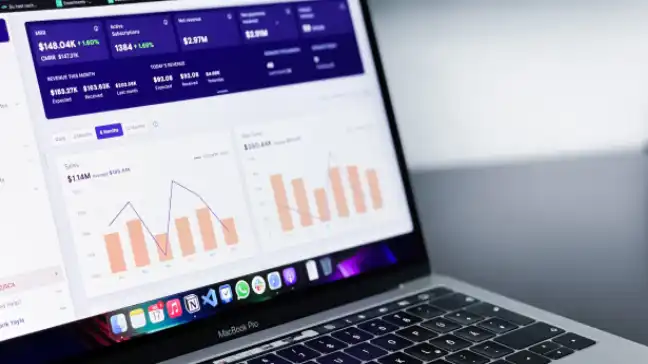Landing a data science role isn’t just about coding and modeling anymore. Interviewers increasingly focus on behavioral questions to assess your problem-solving, communication, and teamworking skills. In this article, we’ll explore what these questions are, why they matter, and how to answer them using proven techniques. I’ll also provide 20 sample behavioral questions with detailed answers to help you prepare confidently for your data science interview. So let’s begin.
Table of Contents
What Are Behavioral Questions?
Behavioral questions are open-ended questions asked to prompt you to explain how you’ve handled real situations in the past. These are asked based on the idea that ‘past behavior predicts future performance’. Hence, interviewers often ask behavioral questions in data science interviews to get to know your real-life responses to challenges and opportunities.
For example:
- “Describe a time you persuaded someone to adopt your approach.”
- “Tell me about a situation where you had to operate under ambiguity.”
These reflect the structured behavioral interview style pioneered by companies like Google for unbiased and effective hiring. They not only assess your problem-solving skills, but also gauge your skills in communication, teamwork, adaptability, and ethics.
Why Do Employers Ask Them?
Employers use behavioral questions to evaluate:
- Soft skills: Communication, teamwork, leadership, ethics, and conflict resolution.
- Problem-solving and adaptability: Proficiency in real-world data issues that often don’t fit into tutorial examples.
- Cultural fit and judgment: How you approach ambiguity, deadlines, and ethical dilemmas, which matter just as much as technical prowess.
How to Answer Behavioral Questions: The STAR Method
There are different ways in which you can answer behavioral questions in interviews. You could share a story, or mention some life-changing lesson you learnt, or state the impact of an incident. How you perform in these questions depends on your unique storytelling style and how well you’ve prepared.
One of the most effective ways of answering behavioral questions, especially in data science interviews, is by following the STAR structure:

- S – Situation: Set the scene or context. Describe the context within which you performed a task or faced a challenge. Keep it brief but specific.
- For example: “At my last job, the marketing team noticed that our lead conversion rate was dropping for two quarters in a row.”
- T – Task: Explain your task/goal/responsibility. Explain your specific role in that situation. What were you responsible for? What goal were you trying to achieve?
- For example: “I was asked to analyze the conversion funnel to identify where prospects were dropping off.”
- A – Action: Mention what you specifically did. Describe the actions you took to address the task. Be specific about your contribution, even if you worked in a team.
- For example: “I pulled customer journey data, built a funnel analysis in Python, and used cohort tracking to pinpoint the drop-off stage. I also ran a short user survey to validate the findings.”
- R – Result: Speak about the outcome, ideally quantified. What changed because of your actions? What did you learn?
- For example: “We discovered a confusing UI step during sign-up. After fixing it, conversions improved by 18% in the next month. It became a case study for our product team.”
Quick Practice Guide
Structuring your responses can help you avoid vagueness and demonstrate real impact. It helps you stay focused and avoid rambling. It not only shows what you did, but also why it mattered.
Before we get to the sample questions, here’s a quick template for you to practice following the STAR structure:
- S: “At [company/role], [describe the context or challenge]…”
- T: “My role was to [your responsibility or objective]…”
- A: “I took the following steps: [explain actions]…”
- R: “As a result, [share the outcome, metrics, or learning]…”
20 Behavioral Questions & Answers for Data Science Interviews
Here are 20 essential behavioral questions you might face in a data science interview, along with sample STAR-based responses:
Q1. Tell me about a time you had to explain complex technical findings to a non-technical person.
Answer: At my last job, I found that certain features on our website were driving most of our user engagement. I felt that the raw numbers might not clearly convey the message to the design team, so I boiled it down to a simple story, stating: ‘When these features click, our engagement score jumps by 20%.’ I also showed a before-and-after chart showing the difference in clicks when the colour of a button and a few other details changed. Once they got it, we prioritized those features, and engagement actually climbed about 15% in the next quarter.
Q2. Describe a situation where you faced a challenging data-quality issue.
Answer: We were building a churn model, and I noticed that 30% of user profiles were missing demographic info. Instead of moving ahead, I dug in, cross-checked user logs, identified duplicate records, and then collaborated with the engineering team to fix ETL gaps. After cleaning things up and running some smart inferences, we managed to fill in most of the gaps. As a result, model accuracy improved by nearly 8% and stakeholders were impressed that it wasn’t just tossed together.
Q3. Tell me about working with a cross-functional team.
Answer: I was part of a project launching a recommendation engine. I worked closely with engineers (to ensure data pipelines), and product managers (to define success metrics like click-through rate). We would meet up every week, where engineers would tell us what was feasible, and PMs would state what they valued. I would then translate those into data specs. That open communication helped us deploy the project on time, and the CTR went up by 15% post-launch.
Q4. Have you ever had to adapt mid-project to shifting priorities?
Answer: Midway through a customer segmentation project, the marketing team redirected us to a different project. They suddenly needed insights on new segments for a campaign launching the next week. I pivoted; cut the analysis half-way to focus on their new criteria. I reorganized tasks and aligned the rest of the team. We delivered fresh segments in a few days, and the campaign hit key KPIs. They were able to launch on schedule. We did well.
Q5. Tell me about a time you handled conflict within your data science team.
Answer: On one of our projects, two of my teammates had a disagreement – one wanted a simple logistic regression, and the other, a complex neural net. It stalled us. I suggested we run both on a subset and compare their performance. We presented the results together. It turned out the combination of both did best – so we went with that. It resolved tension, improved accuracy, and the mood within the team improved from there.
Q6. Describe a tough deadline you had to meet.
Answer: We were told on a Monday morning about a board review due Friday with insights on quarterly sales trends. That’s tight. I broke the work into smaller milestones – data pulling by Wednesday, analysis by Thursday morning, and presentation-ready visuals by the same evening. I kept everyone on track with quick daily check‑ins, and we had smooth visuals ready by Thursday night. At the review, execs said it looked polished and professional.
Q7. Have you ever learned a new tool very quickly for a project?
Answer: Yes! We needed real-time analytics but relied on batch processing, and I hadn’t used Spark Streaming before. I enrolled in a weekend crash course, built a prototype by Monday morning, then demoed it on Tuesday. The team liked it, and it became our new data workflow, cutting report latency from hours to seconds.
Q8. Tell me about a project that didn’t go as planned, and what happened next.
Answer: We launched a machine learning model to predict user churn, and it did great on test data – with around 90% accuracy. But in production, the performance dropped. I went back and realized we hadn’t accounted for seasonality changes in user behavior. We retrained the model using rolling windows and added time-based features. This brought the accuracy back up to about 87%. It reminded me how real-world data shifts all the time.
Q9. Describe a time you handled limited or messy data.
Answer: At a startup I worked with, we barely had any labeled data, but needed a recommendation proof-of-concept. I used transfer learning – started with embeddings from a public dataset, and then built a simple model with whatever little we had. It performed at about 70% precision, enough to secure more funding for better data collection.
Q10. Share a time you proactively learned something that benefited your team.
Answer: I noticed our NLP pipeline was struggling with customer support tickets. I taught myself transformer models – took some online courses and built a demo classifier. I shared it with the team, and we replaced the old rule-based system. Classification accuracy in tickets improved by around 18%, and triage became much faster.
Q11. Can you share a time when your analysis convinced someone to change direction?
Answer: I noticed our onboarding funnel had a 40% drop-off after a certain step. I suggested A/B testing a simplified sign-up flow. After rolling it out, we saw a 25% lift in completions. The team was initially skeptical, but when the results came back clear, everyone agreed it was a smart move.
Q12. Tell me about an instance when you helped improve a process.
Answer: Our quarterly report used to take days because it was manual. I built a Python & Jupyter notebook pipeline that automated data pulls, cleaning, and visuals. What used to take two days, now runs in 30 minutes. It freed up our Product Manager and me to focus on insights instead of formatting.
Q13. Describe a time when you received critique and how you responded to it.
Answer: After presenting a dashboard, the head of sales said it was too cluttered. Instead of taking it personally, I asked what info was most important to them. We trimmed out extras, made some of the charts interactive, and added brief tooltips. They now rely on it weekly, and we even got positive mentions in our company’s monthly newsletter.
Q14. Have you ever identified an issue before others did?
Answer: Yes – in logs and metrics, before the product team noticed something off. I raised a flag in our Slack ‘#alerts’ channel, ran some anomaly detection, and we realized a weekly ETL job had started failing. Our engineers fixed it within a few hours without any customer impact or formal intervention.
Q15. Share about a time you took initiative beyond your responsibilities.
Answer: At my previous workplace, we had no process for model monitoring, and our accuracy was slowly slipping. I drafted a playbook for it: defined key metrics, built a small dashboard, and scheduled alerts. The team appreciated it and we avoided a silent degradation in model performance on a holiday weekend.
Q16. Tell me about a time you dealt with ambiguity in a project.
Answer: At a hackathon, we had to build something product-related in 36 hours. Goals were vague – just ‘make customer experience better.’ My team and I quickly defined a problem: reducing ticket resolution time. We grabbed recent ticket data, made a predictive triage tool, and demoed it on day two. Judges loved it because, even with fuzzy goals, we focused fast and delivered something tangible.
Q17. Describe a situation where you failed. And what did you learn from it?
Answer: I once rushed a clustering model without enough feature exploration. It ended up segmenting customers based on bias, not behavior. When I presented it, the product team pointed out the flaw. So, I went back and spent more time on EDA. I refined features and delivered clusters that made sense and aligned with actual customer behavior. It taught me to never skip that digging step!
Q18. Give an example when you had to prioritize competing tasks.
Answer: At one point, I was juggling a live model bug, a stakeholder requesting fresh visualizations, and finishing a peer review. I paused to ask our lead for priorities. We decided to fix the bug first, then visuals for an upcoming meeting, and then the review. It kept everything on track and avoided chaos.
Q19. Tell me about working with someone whose communication style differed from yours.
Answer: I worked with an engineer who was extremely direct and code-focused. I tend to explain ideas with high-level visual concepts. We initially clashed; he would want me to skip context. Then I simply asked him: ‘Would it help if I share a quick overview first, then dive into code?’ That actually helped! We hit a groove and collaborated much better moving forward.
Q20. Describe a time when you balanced speed and quality.
Answer: Once, we needed to launch a model for an event. There was only one week left. I warned the team that a quick build could miss edge cases. We agreed to launch with a ‘beta’ label, gathered initial user feedback, and committed to a follow-up sprint for refinement. That way, we met the deadline but also acknowledged room for improvement.
Tips to Nail Behavioral Interview Answers
- Prepare your stories by key skills: Select specific instances that focus on leadership, collaboration, adaptability, ethics, time management, and technical innovation. This will make it easier for you to select the right example during real interviews.
- Tailor to job requirements: Prepare by aligning your stories with the competencies listed in the job description.
- Be specific and quantify results: Add specific details while answering behavioral questions to gain the attention of the interviewer. E.g., “increased churn prediction accuracy by 15%.”
- Show reflection and learning: During the interview, try mentioning what you learned through the experience or what you would like to improve.
- Practice adaptability: Interviews can throw unexpected questions, for which one of your prepared answers might fit, with a bit of tweaking. So train to pivot naturally.
Conclusion
Behavioral questions are non-negotiable in present-day data science interviews. They showcase your real-world problem-solving prowess, communication skills, ethical judgment, and teamwork. By understanding the format, preparing targeted examples, and practicing the STAR framework, you can confidently stand out and ace your interviews. With smart preparation and reflection, you’ll be ready to deliver powerful and impressive answers in your next data science interview. So prepare well and all the best!
Prepare better for your data science interview with the following question and answer guides:





